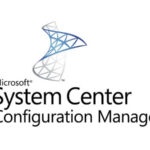Guide for Installing Composer on CentOS 8.
Introduction to Composer
In the world of PHP development, Composer has become an indispensable tool. It is a dependency manager that allows you to easily install and manage libraries or packages required by your PHP projects. Composer simplifies the process of handling dependencies, making it a must-have tool for any PHP developer.
Benefits of Using Composer
Using Composer offers several benefits that can greatly enhance your PHP development workflow. Firstly, Composer makes it easy to manage dependencies in your project. Instead of manually downloading and including each library, Composer automatically pulls in the required libraries for your project and handles the versioning for you.
Secondly, Composer ensures that your project is always up to date with the latest versions of the libraries you depend on. It simplifies the process of updating libraries and ensures compatibility with your project.
Lastly, Composer allows for easy collaboration with other developers. By defining the required dependencies in your composer.json file, anyone can easily clone your project and install the necessary libraries with a single command.
System Requirements for Installing Composer on CentOS 8
Before installing Composer on CentOS 8, you need to ensure that your system meets the following requirements:
- A CentOS 8 server with root access
- PHP version 7.2 or higher
- The curl extension for PHP
- The OpenSSL extension for PHP
- The JSON extension for PHP
If your system meets these requirements, you are ready to proceed with the installation process.
Step-by-Step Guide for Installing Composer on CentOS 8
To install Composer on CentOS 8, Urmați acești pași:
Update your system:
sudo dnf update -yInstall the necessary dependencies:
sudo dnf install -y curl php-cli php-zip unzipDownload and install Composer:
sudo php -r "copy('https://getcomposer.org/installer', 'composer-setup.php');"
sudo php composer-setup.php
sudo mv composer.phar /usr/local/bin/composerVerify the installation:
composer --versionUrmând acești pași, you have successfully installed Composer on CentOS 8.
Troubleshooting Common Issues During the Installation Process
Although the installation process for Composer on CentOS 8 is straightforward, you may encounter some common issues. Here are a few troubleshooting tips to help you resolve them:
Issue 1: “curl: (7) Failed to connect to getcomposer.org port 443: Connection refused”
This error occurs when the server is unable to establish a connection to the Composer website. Ensure that your server has access to the internet and that there are no network restrictions blocking the connection.
Issue 2: “The PHP extension zip is not installed”
This error indicates that the PHP zip extension is missing. You can install it by running the following command:
sudo dnf install -y php-zipIssue 3: “composer: command not found”
If you encounter this error, it means that the Composer executable is not in your system’s PATH. Verify that you moved the composer.phar file to /usr/local/bin/composer. If not, move it to the correct location using the following command:
sudo mv composer.phar /usr/local/bin/composerPrin depanarea acestor probleme comune, you can ensure a smooth installation process for Composer on CentOS 8.
Verifying the Composer Installation
To verify that Composer is installed correctly on CentOS 8, you can use the following command:
composer --versionIf the installation was successful, you will see the version of Composer displayed in the output.
Updating and Managing Composer Packages
Composer makes it easy to update and manage packages in your PHP projects. To update all the packages in your project to their latest versions, navigate to your project’s root directory and run the following command:
composer updateTo install a new package, use the require command followed by the package name:
composer require vendor/packageComposer will automatically download and install the package along with its dependencies.
Best Practices for Using Composer on CentOS 8
To make the most of Composer on CentOS 8, consider the following best practices:
- Always commit your
composer.lockfile to version control. This ensures that all developers working on the project are using the same versions of dependencies. - Regularly update your packages to benefit from bug fixes and new features. Cu toate acestea, be cautious when updating major versions, as they may introduce breaking changes.
- Use semantic versioning for your project dependencies. This allows Composer to handle updates and compatibility more effectively.
- Use Composer scripts to automate common tasks such as running tests, generating documentation, or cleaning up the project.
By following these best practices, you can maximize the benefits of using Composer in your CentOS 8 projects.
Alternative Methods for Installing Composer on CentOS 8
While the method described above is the recommended way to install Composer on CentOS 8, there are alternative methods available. One popular alternative is to use the Composer Docker image. Docker allows you to run Composer in an isolated environment without affecting your system. To use the Composer Docker image, follow the official documentation provided by Docker.
Concluzie
Composer is a powerful tool that simplifies the management of dependencies in PHP projects. By following the step-by-step guide in this article, you can easily install Composer on CentOS 8. În plus, troubleshooting tips, best practices, and alternative installation methods have been provided to enhance your Composer experience. Start using Composer today and improve your PHP development workflow.
CTA: Start using Composer today and streamline your PHP development workflow!




















